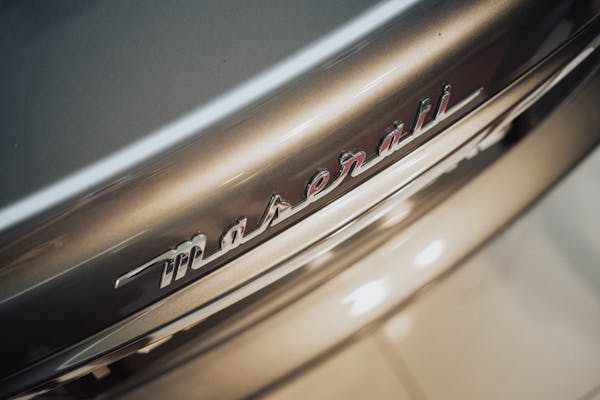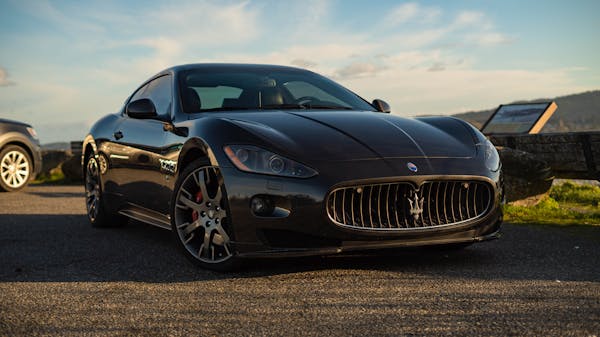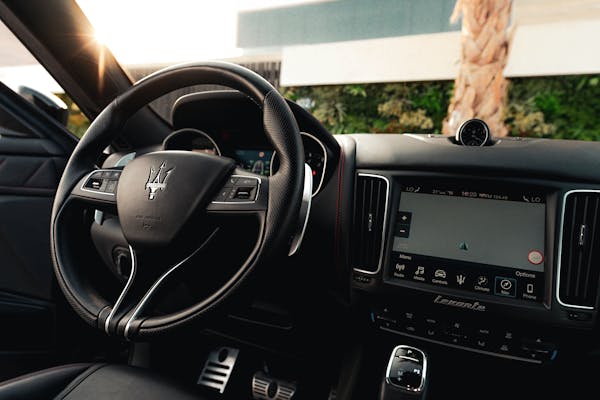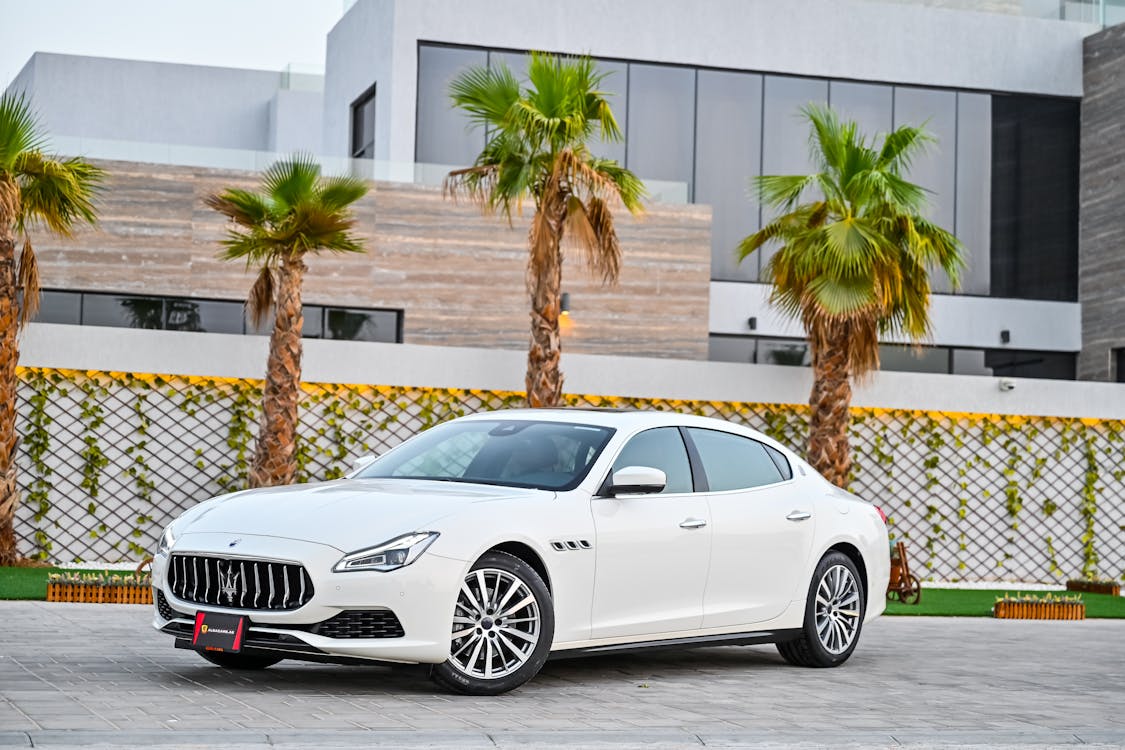Maserati is best known for its high-performance sports cars, but now it's entering the SUV market with a new model called the Levante.
The carmaker says it wants to attract supercar enthusiasts who need more space, and the resulting vehicle is a dramatic departure from Maserati's other models.
Additionally, it could be a great choice for luxury buyers looking for an alternative to traditional SUVs like Mercedes-Benz GLS or BMW X6.
The Maserati Levante is a great SUV to consider if you’re looking for something with traditional Italian style and luxury. It has lots of room inside and cool features, such as rear sliding doors and an optional touchscreen infotainment system.
If you want more power, check out the Ghibli or Quattroporte models instead. If you're looking for a Ferrari but don't want to pay exorbitant sums of money or only have enough space for one car, consider buying a Maserati instead.
Here's why.
A Dramatic Departure From Its Other Models
The new SUV from the Italian sports car maker is a dramatic departure from its other models — and some of its competitors.
That's because it's rather large, which makes it more of an SUV than a sports car. But what makes the Levante special is that Maserati has designed it to look like Ferraris.
Maserati Launched the Levante
Maserati launched the Levante. It is a new SUV from Maserati, the Italian automaker that traditionally makes beautiful luxury cars but has been making more utility vehicles in recent years.
The Levante will be available in India on Tuesday, priced at Rs 2.5 crore (ex-showroom Delhi) for the base diesel variant with a 354-hp V6 engine and all-wheel drive. The top trims — are V8 petrol and twin-turbo diesel engines.
Sportiness and Elegance
The Levante is a crossover SUV that can handle the demands of everyday life but also provide a fun driving experience. The concept behind this vehicle is that it's to be a Ferrari for the masses, according to Maserati.
The key difference between the Levante and other SUVs today is its design. According to Maserati, its goal was to combine sportiness and elegance.
Lots of Torque at Low Speeds
The Levante is powered by a 3.8-liter V6 twin-turbo engine that generates 440hp and 600Nm of torque, which is enough to propel it from 0 to 100kmph in just under five seconds. It can do so in 4.8 seconds if you choose to opt for the S model.
The Levante has a top speed of 225kmph and an electronically-limited maximum speed of 250kmph, but we don't expect many owners will be taking this vehicle past 230kmph on regular occasions.
Three Engine Options — All 3-Liter V6s
The engines are new and designed specifically for the Levante and each is turbocharged. The first two engines are twin-turbocharged, while the third has a single turbocharger.
The two twin-turbocharged engines will have around 550 bhp (410 kW) and 700 Nm of torque from a low 1,500 rpm up to 4,000 rpm; the single turbo unit will produce slightly less power but more torque than the twins.
Comes Standard With All-Wheel Drive
The Levante will come standard with all-wheel drive, but customers can choose between rear-wheel drive and all-wheel drive. The latter is a more sporting option and will be outfitted with an automatic transmission.
Maserati is known for its sports cars. The Levante is the first SUV from Maserati.
It’s a four-door SUV designed to compete against vehicles like the Bentley Bentayga and Aston Martin Rapide S — which currently cost upwards of $250,000 — rather than conventional luxury SUVs like those offered by Mercedes-Benz or BMW.
Until Now, Maserati Was Known for Its Convertible Sports Cars
Maserati first SUV is called the Levante. The first thing you notice about this new SUV is the big 20-inch wheels and tires that give it an aggressive look.
The next thing you notice is how smooth it rides over rough roads, with little body roll compared to other SUVs in this class, such as the BMW X5 or Mercedes GLE.
It looks like a sports car on steroids but handles like one too thanks to an aluminum chassis and suspension components made out of magnesium alloy.
This helps keep weight down so that performance won't suffer despite being heavier than most competitors at around 4500 lbs (2113 kg).
A great choice for supercar enthusiasts who need more space
The Levante is a dramatic departure from Maserati's other models, which are traditionally sports cars or coupes. For the first time, it will be competing in the same market as SUVs like the Porsche Cayenne and BMW X6.
The SUV segment has become increasingly popular over recent years due to its ability to offer something for everyone. This means luxury car buyers want practicality and comfort, sports car enthusiasts want speed and handling, off-roading fans want ruggedness and reliability, and families need space for storage.
The new Maserati Levante seems poised to deliver all of these qualities while still being able to handle a sports car on curvy roads — something that has never been done before by an SUV.
Questions and Answers
Maserati Levante has been around for a while, but there are still many questions about it for prospective buyers. To help answer some of those questions and hopefully clear up any confusion about this vehicle, we've compiled this list of frequently asked questions (FAQs) about the Maserati Levante.
Q. What is the difference between the 2019 and 2020 Maserati Levante models?
A. The 2019 Maserati Levante is the second generation of that vehicle. It has a new engine and transmission, and Maserati Levante has updated its body style to make it look more sleek and modern.
The 2020 model is the third generation of that vehicle, which means it has a new engine and transmission. The 2019 Levante is more powerful than its 2020 counterpart, but the latter has better fuel economy performance figures.
Q. Is the Maserati Levante all-wheel drive (AWD)?
A. Yes, the Maserati Levante is an all-wheel drive. It has a permanent four-wheel-drive system with a torque transfer split of 40% front and 60% rear.
To reduce CO2 emissions, the Levante also has a rear-wheel-drive mode that engages when you're driving at lower speeds (less than 50 mph) or when you don't need full traction (for example, when driving on wet roads).
For better fuel economy and handling performance, activate this rear-wheel drive mode by pressing the Drive Select button on the center console until it turns magenta.
The Levante comes standard with a six-speed automatic transmission but you can upgrade it to an eight-speed automatic if desired.
Q. Does the Maserati Levante have third-row seating?
A. Yes, the Maserati Levante has third-row seating. It's not as spacious as other SUV models, but it's comfortable for two adults and two kids.
There are no airbags in the rear row of seats, so there's an increased risk of injury if a child or adult is not buckled up correctly.
Q. Is the Maserati Levante a luxury SUV?
A. The Maserati Levante is a luxury SUV, meaning it's an SUV with a luxury interior and exterior.
The luxurious interior of the Levante includes leather seats, wood trim, and a premium audio system that gives you access to satellite radio.
If you want to add other luxurious items to your car after buying it, you can purchase additional options with your order.
The navigation system offers turn-by-turn directions from its large display screen between two front seats.
Q. How much does the 2019 Maserati Levante S cost?
A. The 2019 Maserati Levante S is the most expensive model in the lineup, with a starting price of $115,000. It has a V8 engine and all-wheel drive, while the 3.0-liter twin-turbo V6 engine comes standard on lower trim levels. The Levante's base price is $88,000; this includes front-wheel drive, but you can opt for an all-wheel drive an option if you want it.
The other models include:
- Levante Base (front wheel drive) - $81,500
- Levante AWD - $85,500 - starting price includes some options like black alloy wheels
- Levante S - $90,500 - includes black leather interior; carbon fiber mirror caps; adaptive suspension; air suspension system, etc.
Q. Does the 2018 Maserati Levante have good gas mileage?
A. The Maserati Levante gets a combined 19 mpg city/26 mpg highway. This is a bit better than the BMW X6, which gets 18/25 with all-wheel drive and 17/22 with rear-wheel drive.
The Maserati's fuel economy will be about the same as the Porsche Cayenne GTS, which also has 494 hp and 550 lb-ft of torque, but returns 19 mpg city and 25 mpg highway.
Q. Is the Maserati Levante 2017 SUV AWD?
A. Yes, the Maserati Levante is an AWD SUV. The Maserati Levante has a permanent all-wheel drive system and a ZF eight-speed automatic transmission.
The Maserati Levante also features a torque vectoring system that helps you handle bad weather conditions or cruise through hilly terrains.
Even though it has been around for a few years, there are still many questions about the Maserati Levante for prospective buyers
The Maserati Levante is a luxury SUV that has been around for a few years. While Maserati introduced it to the market in 2015, there are still many questions about the vehicle and its features. This guide answers some of those questions.
The first thing to know about this model is that it comes as a two-door or four-door model, depending on what you want from your vehicle. You can choose between two trim levels: the base Levante or the more expensive S trim level (which has more horsepower).
If you're looking for something with six cylinders instead of eight, you'll want to go with the base model instead of upgrading to another one.
Conclusion
As the name suggests, the Maserati Levante is a luxury SUV for the masses. It has lots of torque at low speeds and can accelerate to 100kmph in just over five seconds. The Levante will be available with three engine options — all 3-liter V6s — and customers can choose between rear-wheel drive and all-wheel drive. Until now, Maserati was known for its convertible sports cars but this new model could change that perception.




Comments
Post a Comment